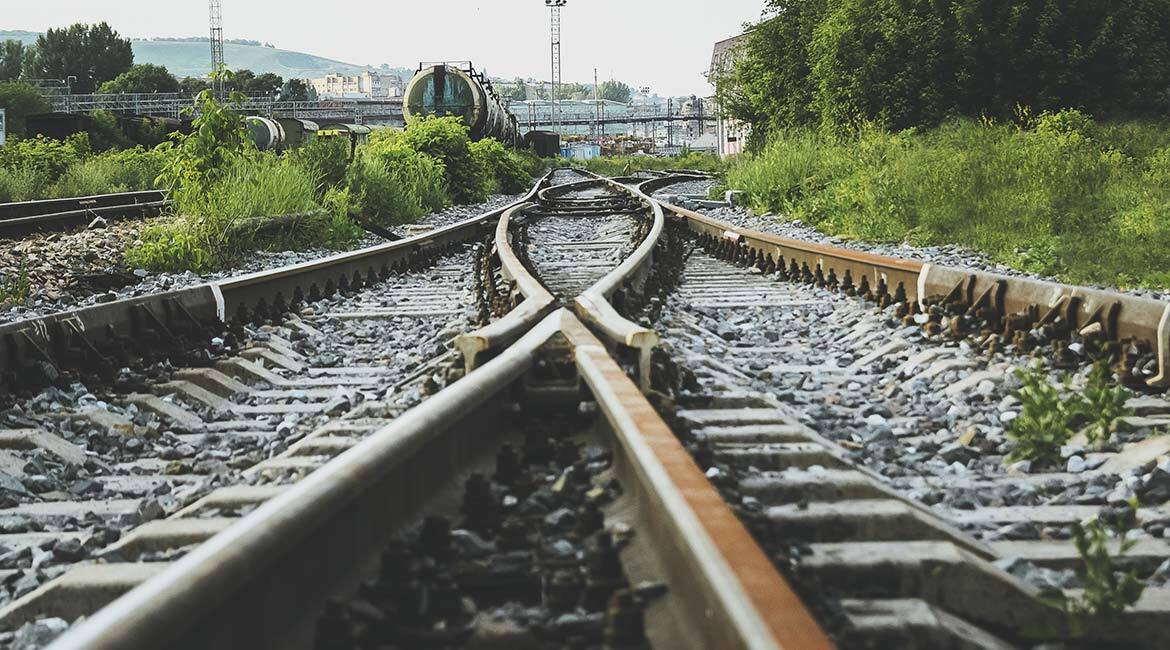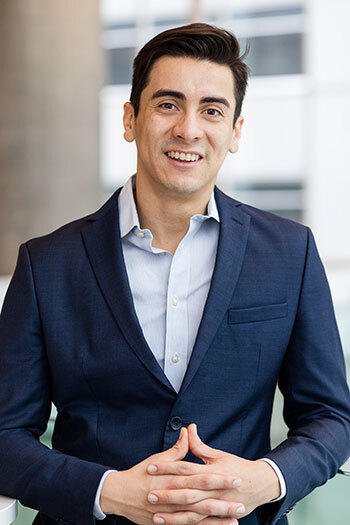From Railroad Optimization to Transportation Electrification

Purchased at Istockphoto.com. Copyright.
Growing up in Colombia in the 1990s meant being prepared to leave. Diego Ramirez Cardona, a professor in the Department of Construction Engineering, was fortunate enough to have a solid academic background and to know several languages, including French, so that he could choose his country of destination if need be.
During his studies in Civil Engineering at EAFIT University in Colombia, an agreement with the École Nationale d’Ingénieurs de Saint-Étienne allowed him to obtain a double degree and conduct his final internship in Lyon, France. Diego was supposed to stay there for only two years, but his professors encouraged him to pursue a master’s degree. It was there that he met key people who would lead him down an unusual path.
“I wanted to be an architect because it’s a much more visible profession, but I realized that what I liked best was knowing how a structure works rather than how it is used.”
Early on, Diego chose civil engineering works over the world of buildings. Since mobility defines his life and the study of soils has always fascinated him, the young engineer felt comfortable in the road infrastructure sector. His master’s internship opened the door to Eiffage Infrastructures in Lyon where he developed a new fatigue testing method for paving materials. After earning his master’s degree in 2013, Diego began his PhD at the École Nationale des Travaux Publics de l’État, in Lyon, with a new research project on asphalt mixes on his mind.
When Asphalt Leads to Trains
Unfortunately, his director did not get the grant for the project Diego was supposed to work on. Meanwhile, Professor Emeritus Hervé Di Benedetto received a grant for a research project in the field of railways but had no students. Diego then agreed to change his thesis topic.
Why not transfer what he learned about roads… to railroads? “Railroads are built a certain way and have been built that way for 100 years. We don’t know why it works,” says Diego Ramirez. So how can we optimize a way of doing things that we don’t understand? This became the subject of his thesis, financed by the Société nationale des chemins de fer française, a thesis which would have major repercussions on the railway industry.
Using the Ground to Make Things Happen
“I knew nothing about trains, but I knew something about road materials.” In the laboratory, Diego tested the impact of a train running on an asphalt sub-base with its forty wheels, tons of material and lightning speed. The results were astonishing—this new solution had an extremely long life compared to conventional techniques.
“On a railroad, the asphalt base course is not exposed to the elements as it is on a road. Most importantly, the weight of the train does not rest on the road materials; these are protected by the ballast and ties,” explains Diego, who got involved in updating the French railway technical construction guide.
Diego Ramirez Cardona’s thesis paid off. And he is proud of it. In 2016, the high-speed railway line between Brittany and Pays de la Loire was built with an underlay of gravel-bitumen on more than half the line, i.e. 105 kilometres. “We’ve been monitoring its progress for the past six years. The maintenance staff finds that the section with asphalt needs less work than the part that has none.”
In 2018, Diego accepted the position of Innovation and Research Project Manager at Eiffage Infrastructures where he stepped directly into the future, this time with a project destined to change public road lighting.
Luciole® and the Lighting Train
The Luciole® project fits perfectly with good environmental practices – using light on an as-needed basis, saving energy and reducing light pollution. “In collaboration with industrial partners specialized in lighting, we developed lights equipped with motion sensors,” says Diego. Depending on the speed at which pedestrians, cyclists or motorists are moving, the intelligent street lights create a train of light that accompanies users along their route.
Diego sees roads as part of an environmental complex, not just as a way to get from point A to point B.
A New Life in Montreal: Diego Becomes a Professor!
Little by little, the idea of getting closer to his family was gnawing at him. Europe is a long way from Colombia. Diego learned that the ÉTS was in a recruitment phase. He was thinking of becoming a professor one day, so why not now? He applied and obtained the position. “For me, I had found nirvana!”
In 2021, he moved to his new adopted city with, of course, another project in the works that he was eager to share with his students. “If professors can pass their passion for their subject on to students, they will produce many engineers who are in turn passionate about their profession.”
The Future is Connected to Roads
In the not-so-distant future, Diego envisions a network of roads connected to Quebec’s natural resource, its electrical power. Electric cars will recharge while driving thanks to inductive sensors embedded in the road. “We shall be ready for 2035 when gasoline-powered cars are phased out,” says Diego.





